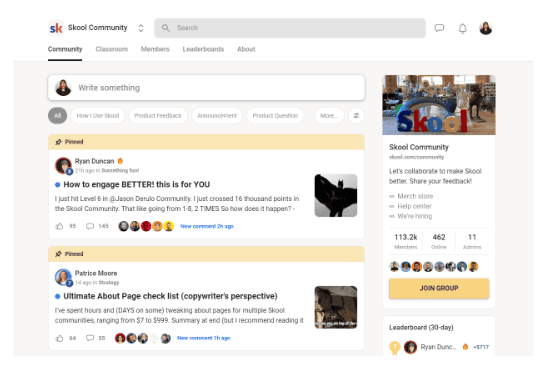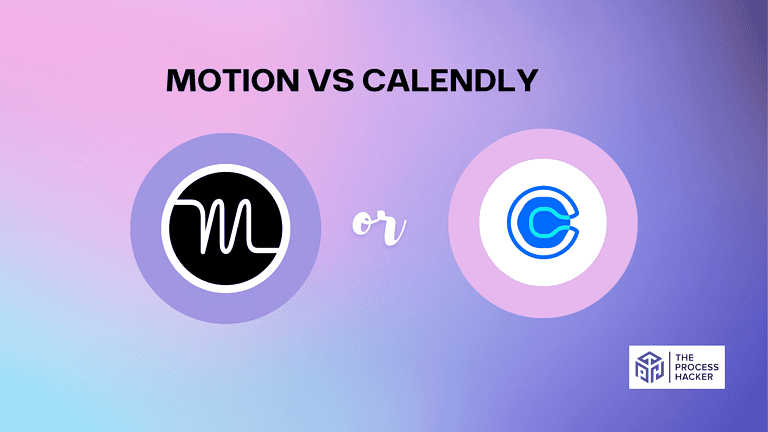What Are Key Performance Indicators?
If you’re running a small business, it’s important to track your key performance indicators (KPIs) to ensure that you’re on track to achieve your goals. Tracking KPIs can help you determine whether you need to make changes to your business strategy and can help you optimize your operations.
There is a variety of different KPIs that you can track, depending on your business’s unique needs. These KPIs will show progress toward achieving our most ambitious goals Here are some examples of KPIs that might be relevant for small businesses: revenue, profit margin, customer churn rate, average order value, and website traffic.
Tracking these metrics will give you a better understanding of how well your business is performing and where you could stand to improve. So don’t forget to set up some tracking systems and analyze the data regularly! It’s essential for any small business owner looking to grow their enterprise.
Do you want to learn more about key performance indicators and just how they work? If so, keep reading to see what exactly KPIs are, how they work, how they work in the business world, and how we can incorporate them in our daily lives!
What Are Key Performance Indicators (KPIs)?
A Key Performance Indicator (KPI) is a quantifiable measure used to evaluate the performance of a business or organization.
Establishing KPIs for strategic goals can help you to determine what is most important and worthwhile to work on to achieve your end goal. KPIs help you focus your attention on the important stuff and also help stay on the right track no matter what the goal is.
KPIs can be financial or non-financial, and they are often specific to an industry or sector. Common examples of KPIs include measures of profitability, productivity, sales, and customer satisfaction.
While KPIs can vary depending on the type of business, there are some general principles that should be followed when choosing and using KPIs:
- Should be aligned with the overall strategic objectives of the organization.
- Measure performance to help you make better decisions to reach your end goal.
- Provide evidence to help forecast future performance of reaching your goal.
- Keep track of your behaviors, effectiveness, quality, personal performance, etc.
- Are updated on a regular basis so that decision-makers can track progress and identify any potential problems.
When used correctly, KPIs can provide valuable insights into the performance of a business or organization.
Why is it Critical to Select the Best KPIs?
To put it into perspective, there is a saying that states, “what gets measured gets managed”, and this rings true in many different aspects and even in KPIs. If you focus on the right key performance indicators and measure KPIs, you will be able to achieve your goal a lot quicker and in a more efficient way.
We could also think about this in a business sense where if you stay focused on your KPIs, your staff will maintain their performance and work towards making the appropriate changes if needed. If you focus on the wrong KPIs, you could risk participating in unrelated behaviors or making choices that don’t follow your intended goal.
Can You Select Ineffective KPIs?
While most KPIs are effective, there are oftentimes scenarios where people will choose the wrong KPI. While everyone can get off track with their goals, learning how to stay motivated to pursue your end goal is essential, so knowing how you are selecting ineffective KPIs is useful.
A perfect example of this is many businesses failing to realize that work-from-home options for their employees can be beneficial to not only their employees but their businesses as well. Attendance is an important part of working for a company being punctual every day and showing up on time, avoiding calling in sick for unnecessary reasons, and just putting in the work that goes into being a good employee is essential, but there are a lot of people that prefer different work environments over the other.
Many businesses fail to realize that the remote environment and working virtually can work just as well as the modern office environment, or it could potentially work even better. What many employers stress about is the work not getting done in the quality that it would in the office if the option for remote was made present in their company.
The ineffective KPI would be struggling to move on from the old way of doing things instead of slipping into something new that could potentially be better for the company and its employees. Many managers focus too much on the time management of things getting done instead of the process and how employees are working on everything.
How KPIs Run in the Realm of Business
Running a business can be one of the hardest, yet rewarding feats that you can conquer and take advantage of. Many people have the dream of running their own business, but knowing just how difficult it can be can deter them from fully committing to letting their dream come true.
KPIs are used in every aspect of running a business and knowing just how important they are during the process is essential. For a business to run smoothly, tracking the right KPIs can be what helps you get a pulse, measure progress, realize achievements, detect issues, and identify ways to improve the business.
Knowing just how important KPIs are when it comes to a business is essential, so here is what you need to know about them!
Executing On the Strategic Goals
Throughout this blog post, the book The 4 Disciplines of Execution (book summary) provides a solid framework for executing your most important strategic KPIs amongst your day-to-day work.
This book provides these 4 Disciplines of Execution for accomplishing breakthrough results on your strategic KPIs:
- Focus on the Wildly Important
- Act on the Leading Indicators
- Keep a Compelling Scoreboard
- Create a Cadence of Accountability
Focus on the Wildly Important
The first discipline requires you to focus on The One Thing (book summary) instead of many organizational objectives to achieve more:
Discipline 1: Focus on the Wildly Important KPIs: “The practice of defining the right KPIs and narrowing the team’s focus to those goals.”
The corporate teams that practice Discipline 1 have clarity on their wildly important goals. Further, they develop the lagging indicators and the right KPIs for those goals.
First, start by selecting your one strategic objective or Wildly Important Goal. The Wildly Important Goal (WIG) is “a goal essential to carrying out the organization’s mission or strategy.” When you fail to achieve this goal, the result will be that all other achievements will not matter as much.
Instead of trying to accomplish everything, this high-level goal should clearly indicate its importance to the team such that each member can focus on it.
Unfortunately, it is common for leadership to create more organizational goals instead of narrowing their attention to one. Thus, the most significant challenge of leadership is saying no to many good ideas. Another issue is to turn everything in the day-to-day operations into major organizational goals.
Leading and Lagging Indicators
There are two major categories for key performance indicators: leading and lagging indicators. In the book, The 4 Disciplines of Execution (book summary), the authors formulated the second discipline to focus on the leading indicators:
Discipline 2: Act on the Lead Measures: “The practice of consistently carrying out and tracking quantitative KPIs on those high-leverage activities that will lead to the achievement of the wildly important goals.”
Teams that practice Discipline 2 have clarity on the leading indicators of their goals and respectively track KPIs to achieve them. But first, we must define and understand what a lagging indicator is:
Lagging Indicators
Most organizations and teams should have a singular strategic goal for which progress can be measured in terms of the lagging indicator.
Lagging KPIs provide performance measures of this high-level goal. Lagging indicators can be simple to measure but tough for an individual or team to influence directly.
From the book, the best way to express lagging key performance indicators are as follows:
From X to Y by When – “tracking progress from a current X to a better or more desirable Y within a certain time frame”
Examples of lagging indicators include net profit margin, sales revenue, employee satisfaction, customer satisfaction, and customer retention.
Leading Indicators
Most leaders focus on lagging indicators as these easily show whether success has been achieved. However, individual teams should identify the leading KPIs with the highest leverage and take action to achieve the team’s or organization’s goal.
Leading KPIs quantifiably measure the planned actions, which are taken to achieve the wildly important goal. Create SMART KPIs using the smart KPI requirements:
- Specific KPIs focus your actions on only the particular high-leverage actions to achieve the major goal.
- Meaningful KPIs provide you with a quick understanding of why you are taking action to complete the goal.
- Actionable KPIs help you predict progress and indicate “what action needs to be taken to accomplish that goal.”
- Relevant KPIs are influenceable as your actions are within your control and produce results toward the major goal.
- Trackable KPIs measure clearly “what progress means,” qualitatively or quantitatively. Further, you should define KPIs with start and end dates or it will not happen.
Leading key performance indicators comprise the team’s Strategic Bet. The Strategic Bet is the hypothesis that certain high-leverage activities or the right KPIs will drive the achievement of a goal, which is proven through execution.
The leading key performance indicators help your team improve the strength of their actions using the 80/20 Rule. You should monitor and take action on the 20 percent of highest-leverage KPIs, which will cause 80 percent of the results toward achieving your wildly important goal.
Examples of leading indicators include calls made, sales calls booked, posts published, and customers serviced.
Maintaining Compelling KPI Dashboards
In the book, The 4 Disciplines of Execution (book summary), the third discipline ensures that everyone knows the score, their KPIs, and whether they are winning:
Discipline 3: Keep a Compelling Scoreboard: The practice of visibly tracking key performance indicators for a goal on a balanced scorecard.
Organizational teams that practice Discipline 3 are continually preoccupied with performance management to move the right KPIs on the scoreboard.
“People play differently when they are keeping score.” When teammates take responsibility for tracking KPIs and keeping score, they understand their operational performance in relation to achieving their goal. This practice raises the level of employee performance, which causes people to focus on the right KPIs, measure progress, and take the actions needed to win.
Scoreboard
In Discipline 3, execution is captured on KPI Dashboards or scoreboards:
Scoreboards visually show key performance on leading and lagging indicators for your wildly important goal. Additionally, the balanced scorecard should be viewable by the entire team with the KPIs being consistently and regularly updated.
The scoreboard affects team operational performance in the following three ways:
- Gives a visual representation of the team’s strategic bet and set KPIs.
- Shows to that team that winning matters.
- Gives a counteraction to the urgency of the day-to-day operations.
Ask these four questions to decide whether the KPI dashboard is meaningful for the team members:
- Is it simple? Display only the vital information and key performance indicators needed to play the game.
- Can I see it easily? Make it very visible to the entire team to drive accountability.
- Does it show leading and lagging indicators? The team knows it can impact the leading KPIs while seeing the desired results in the lagging KPIs.
- Can I tell at a glance if I’m winning? Show within 5 seconds if you are winning or losing.
The 4DX framework serves to help your team stay engaged in achieving your strategic goals by creating a winnable game. The winnable mentality is orchestrated through the interaction of the key performance indicators on your balanced scoreboard.
Create A Cadence Of KPI Metric Accountability
In the book, The 4 Disciplines of Execution (book summary), the fourth discipline adds accountability into the equation:
Discipline 4: Create a Cadence of Accountability: “The practice of regularly and frequently planning, KPI monitoring, and reporting on activities intended to move the key performance indicators on the scoreboard.”
In this discipline, you establish a cadence of accountability, which is “a recurring cycle of planning and accounting for results.”
While the first three disciplines set KPIs up for the game specifically for focus, leverage, and engagement, this discipline is for taking action.
Weekly Meetings
The team’s weekly meetings provide the cadence of accountability for executing the KPIs for the strategic goals. You should hold a team meeting held at least weekly to go over commitments, review KPIs and scoreboards, and plan how to improve the KPIs on your scoreboards.
In the weekly meeting, everyone should share accountability for the leading key performance indicators and commit to at least one action that moves the leading indicators.
Also, the session should allow teammates to report on their key performance actions, reflect on their progress, and solve problems. Lastly, team members can help each other solve issues and accomplish an objective or KPI by clearing obstacles out of the way.
KPI Examples
In this section, we provide examples of key performance indicators, specifically those for finance, sales, marketing, and operations.
Financial KPIs
Financial KPIs are an important tool for businesses that want to measure performance and improve profitability.
- Gross Profit Margin: The gross profit margin is a measure of profitability that compares the amount of money a business brings in from sales to the costs associated with making those sales. This KPI is calculated by dividing gross profit (the difference between revenue and cost of goods sold) by total revenue, and it can be used to track changes in profitability over time.
- Net Profit Margin: Net profit margin is a measure of profitability that compares the amount of money a business has earned after accounting for all costs to the total revenue it has generated. This KPI can be used to track changes in profitability over time, and it may be calculated using either gross or net profit as the numerator.
- Operating Cash Flow: Operating cash flow is a critical measure of profitability for businesses in any industry, as it shows how much money the business has available to reinvest into growth initiatives or payout to shareholders.
- Return on Assets (ROA): Return on assets is a measure of how profitable a business is relative to the assets it owns. This KPI can be calculated using net income as the numerator, and total assets as the denominator, and may be expressed either as a percentage or as a ratio.
- Return on Equity (ROE): Return on equity is a measure of profitability that compares net income to shareholder equity and may be used to track changes in performance over time. This KPI is typically expressed as a percentage, and it may be calculated using either net income or total equity as the numerator.
Sales KPIs
Sales KPIs are important tools for businesses that want to measure and improve their performance in the marketplace.
- Sales Revenue: This KPI is calculated by adding up all sales revenue generated over a given period of time, typically expressed in either dollars or as a percentage.
- Sales Volume: Sales volume measures the quantity of goods sold by an organization and can be used to track changes in performance over time. This KPI may be tracked using internal sales data or external market information such as industry sales figures.
- Monthly Recurring Revenue (MRR): Monthly recurring revenue is an important metric for businesses that offer subscription-based services, as it measures the average monthly fee they receive from customers. This KPI is calculated by adding up all monthly fees and dividing by the number of customers to get an average value.
- Sales Calls Booked: Sales calls booked are a measure of the number of sales leads that an organization books into its pipeline. This KPI can be tracked either as a total value or as an average per sales rep to evaluate performance across individual team members.
- Sales Conversion Rate: Sales conversion rate is a measure of how successful a business is at converting sales prospects into paying customers. This KPI is typically calculated by dividing the number of sales that closed over a given period by the total number of sales leads, and can be tracked to improve performance over time.
- Average Order Price: Average order price is a measure of profitability that compares the total revenue generated by an organization over a given period to the number of orders placed, typically calculated as the average item price multiplied by the number of units sold. This KPI can be used to track changes in performance over time, and it helps businesses understand how their pricing strategies affect profitability.
Marketing KPIs
Marketing KPIs are important tools for businesses that want to measure and improve their marketing performance. Some key marketing KPIs include:
- Lead Generation: Lead generation is a measure of how many qualified leads a business is able to generate over a given period of time. This KPI can be tracked using data from marketing campaigns, such as the number of website visitors, email opens, and clickthroughs.
- Customer Lifetime Value (CLV): Customer lifetime value is a measure of how much potential revenue a business can expect to generate from an individual customer over the course of their relationship with the organization. This KPI helps businesses understand how their marketing efforts impact long-term profitability and may be tracked by analyzing factors such as customer retention rates, subscription renewal rates, and upsell/cross-sell performance.
- Customer Acquisition Cost (CAC): Customer acquisition cost is a measure of how much money it costs to acquire new customers, typically calculated by dividing the total marketing spend over a given period by the number of new customers acquired. This KPI helps businesses understand how their marketing efforts impact profitability and can be tracked over time to identify trends and areas for improvement.
- Marketing Return on Investment (ROI): Marketing ROI is a measure of the profitability of marketing activities, calculated by comparing the total revenue generated by these activities to their associated costs. This KPI can be tracked over time to identify trends and improve marketing performance.
- Website Traffic: Website traffic measures the number of visitors to a website over a given period of time, typically calculated as the total number of hits or page views on a site. This KPI can be used to track changes in performance over time as well as to identify factors that may be driving traffic growth or decline.
- Social Media Engagement: Social media engagement is a measure of the overall level of user activity on a social media platform, typically calculated as the average number of likes, comments, and shares over a given period. This KPI can be tracked to identify factors that drive higher levels of engagement and improve performance over time.
- Email List Size: Email list size is a measure of the overall size and reach of an organization’s email subscriber base. This KPI can be tracked over time to identify trends in growth or decline and optimize marketing campaigns accordingly.
Operational KPIs
Operational KPIs are important tools for businesses that want to measure and improve the efficiency and effectiveness of their operations. Some key operational KPIs include:
- Customer Satisfaction: Customer satisfaction may be tracked using surveys or other customer feedback methods, which organizations can use to identify areas where improvements may be needed.
- Employee Satisfaction: Employee satisfaction may be tracked using employee surveys or other forms of feedback, which can help organizations identify areas where employees are struggling and work to improve employee engagement.
- Supply Chain Efficiency: Supply chain efficiency is a measure of how effectively resources are utilized throughout the supply chain, typically calculated as the ratio of revenue generated by a business over a given period to the total cost of its supply chain activities. This KPI can be tracked over time to identify areas for improvement and optimize resource allocation decisions.
- Resource Utilization: Resource utilization is a measure of how effectively a business is utilizing its existing workforce or other resources, typically calculated as the ratio of revenue generated by a business over a given period to the total available capacity of its workforce or other resources. This KPI can be tracked over time to identify trends in resource utilization and inform decisions about adding new resources or relocating existing resources.
- Cycle Time: Cycle time is a measure of how quickly a business completes its internal processes, typically calculated as the average amount of time it takes for a task to move from initiation to completion. This KPI can be tracked over time to identify bottlenecks and inefficiencies in business processes, improving operational performance and efficiency.
Overall, there are many different KPIs that businesses can track in order to measure their success and improve their performance over time.
Can KPIs Be Applied to Everyday Life?
KPIs are an important concept in the success of a business, so why can’t you apply them to your own personal life and decisions?
Now that you have a better understanding of KPIs and how they can be used to successfully run a business, can you use them as part of your decision-making in different situations in your own life? The answer is simply, yes!
While a lot of people tend to only think this is a business concept, KPIs can most easily be a part of your everyday life. How can KPIs blend into your life and the decisions you make though? Here’s a little more about them and how they affect our personal growth!
Personal Goals and KPIs
KPIs can be applied in every aspect of our lives because everyone has set goals that they wish to achieve and there are a ton of steps that you can work on to get there. You can recognize these steps as KPIs and the progress of the outcomes of achieving your goal, and it works better than analyzing the hours spent on the task, which is minor compared to the actual task and how it went.
There are some things to think about when you’re in the process of setting a key performance indicator for yourself that can include:
- Knowing what your desired outcome is
- Understanding why this outcome matters
- Figuring out how you’ll keep track of your progress
- Deciding how often you’ll check in on your progress
- Knowing if you succeeded and how to work towards the end goal
Final Thoughts on KPIs
KPIs work to help us indicate what is most important in setting goals for ourselves and in our businesses to help them run even better than before. If you are wondering how to improve your business or your own personal life decision, you should consider checking out KPIs and what they can do for you!







